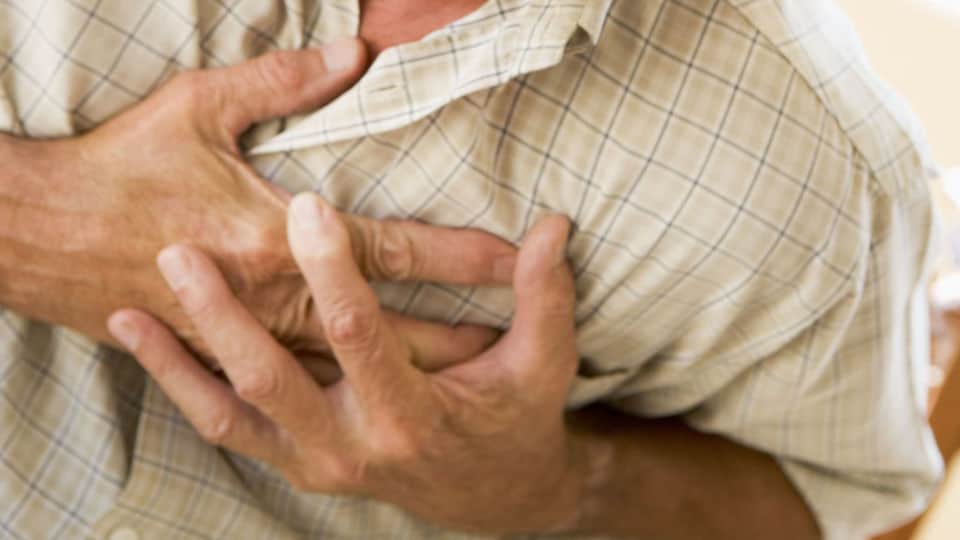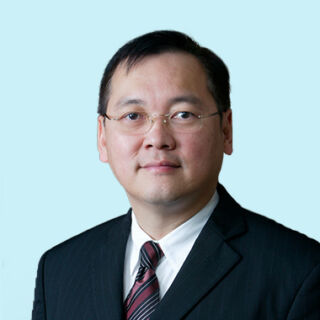Fixing a Broken Heart

We hardly notice but our heart beats about 100,000 times a day. Yet when it does stop, be it due to a heart attack or a cardiac arrest, it will not go unnoticed. In fact, 15 people die daily from cardiovascular disease alone in Singapore.
|
HEART ATTACK |
CARDIAC ARRESTS |
STROKE |
|
A heart attack is when blood supply to your heart is cut off or severely reduced. Your heart will be damaged by the lack of oxygen and begin to die. |
Cardiac arrest is when the heart stops beating suddenly, preventing blood and oxygen from reaching the vital organs. |
Stroke occurs when blood flow to the brain is interrupted or severely limited, cutting off oxygen and nutrients from brain tissue. Brain cells will start dying within minutes after a stroke. |
“The current available treatments for heart disease have significantly improved mortality and morbidity. A good example is 72-year-old Mr Dick Cheney (the previous vice president of USA) who had multiple heart attacks in his thirties. The open heart surgery, cardiac stents defibrillator, heart pump and a new heart have kept him well and alive. He is indeed a testimony of modern science!” says Dr Abdul Razakjr.
Depending on the symptoms and the severity of the heart condition, heart treatments can range from low-tech to high-tech, and from non-invasive procedures to open heart surgery.
“Medical advancements in recent years have shifted towards less invasive procedures and devices to pre-empt potential life-threatening heart problems, adds Dr Ng Wai Lin, Specialist in Cardiology, Raffles Heart Centre.
Happy Pills
Though the invention of a single miracle pill one can take for heart health is not happening soon, pharmaceutical companies have come a long way. With a wide variety of medications for every known symptom and problem of the heart, patients have plenty of options.
According to Dr Teo Swee Guan, among the newer drugs out in the market, ticagrelor and prasugrel are two drugs that are worth discussing. As anti-platelet medications (medications keep blood clots from forming by preventing blood platelets from sticking together) with greater potency, they reduce the risk of cardiovascular morbidity more effectively than generic ones, such as aspirin.
Ticagrelor when used with aspirin can prevent atherothrombotic events in acute coronary syndrome (ACS). Prasugrel is a novel prodrug with more efficient platelet inhibition and is recommended for use in combination with aspirin for acute coronary syndrome (ACS) patients undergoing percutaneous coronary intervention (PCI).
Bracing Up
The stenting technology has evolved over the decades. Stents can help brace up arteries or veins that have constricted flow due to plaque buildup.
Dr Teo shares on its development: “The stenting technology started out as an option over balloon to prevent elastic recoil, which is the returning of the stretched blood artery to its original position. While providing structural support to the problem vessel, the metal stent does not prevent intimal hyperplasia, which leads to narrowing of the blood vessel.”
It was not until in the last decade that drug eluting stents first made their appearance, reducing the chances of intimal hyperplasia from 35% to 5%. Drug eluting stents are an improved version of metal stents. This class of stents releases a drug to block cell proliferation to prevent fibrosis that, together with clots, could otherwise block the stented artery, a process called restenosis, a result of intimal hyperplasia.
However, other issues persist including stent thrombosis, which requires prolonged antiplatelet therapy, and mismatch of the stent to the vessel size.
Now You See Stent, Now You Don’t
The latest development in this area, made commercially available for use in Singapore in the last few months, is the invent of bioresorbable vascular scaffolding (BVS). BVS or bioabsorbable stents can be absorbed into the body after two years, leaving behind only the healed natural vessel, restoring your arteries reactivity and allowing the vessel to be potentially remodeled should there be a need.
“With BVS, patients can have multiple stents applied to the same problem vessel should restenosis occur, since the stent is absorbed,” says Dr Teo. “These stents are also compatible with MRI and MSCT imaging which are becoming the default non-invasive imaging modality for the heart and blood vessels.”
Aortic Aneurysm Repair
Just as blood vessels could narrow due to plaque build-up, they can also swell up to become an aneurysm, a blood-filled balloon-like bulge in the wall of a blood vessel. In particular, aneurysm of the aorta (the largest artery in the body) can cause clot formation and lead to end organ damage.
Aortic aneurysm repair is a tricky surgery. Dr Manish Taneja, Specialist in Interventional and Neuro Radiology & Consultant, Raffles Radiology explains: “The traditional mode of treatment for aortic aneurysm involves open surgery which carries with it high risks and morbidity rates. In the past decade, arotic stent grafting, a minimally invasive procedure, has transformed the way aortic aneurysm is managed.”
“Under aortic stent grafting, a special covered stent is introduced into the groin to the aorta. Through this method, the aneurysm is repaired from the inside in a minimally invasive manner. For uncomplicated cases, patients are free to return home two days after treatment.”
Hearts on Fire
Ablation therapy seeks to stop abnormal electrical signals for patients for heart rhythm problems. Radiofrequency ablation threads catheters into the heart and use radiofrequency energy targeted toward the area(s) causing the abnormal heart rhythm to permanently damage small areas of tissue with heat.
Dr Razakjr explains how the procedure works: “This neutralises (ablates) the heart tissues that are causing the electrical disturbance by creating a block which the electrical impulses can no longer cross. This restores the normal electrical pathways of your heart and allows it to beat normally again.”
In some cases, cryoablation, which damages tissue by freezing rather than heating, may be used rather than radiofrequency energy.
For efficiency and lower cost, this procedure can be carried out together with an electrophysiological study (EPS). Raffles Heart Centre is the one of the few private heart centres in Singapore whereby this procedure can be conducted.
Beating as One
Dys-synchrony, or the abnormal coordination of contraction of the heart walls, is common among patients with enlarged hearts and poor heart function. As a result, blood is ineffectively pumped around the body. There is also an increased leakage of blood backwards across the heart valve instead of pushing blood forwards (mitral regurgitation).
To tackle this, Dr Ng recommends the Cardiac Resynchronisation Therapy (CRT). The procedure uses a special pacemaker coupled with wires (leads) in the atrium (top) and ventricle (bottom) chambers of the heart to resynchronise the way the heart chambers contract.
“This procedure has good results with most patients seeing improvement of symptoms, effort tolerance, heart function and survival,” adds Dr Ng.
Shocking You Back to Life
For patients with high risk of sudden cardiac death due to arrhythmia (heart rhythm disorders), an implantable cardiac defibrillator (ICD) is a sophisticated device that can help. While an ICD is similar to a pacemaker, there are key differences between the two, explained Dr Teo. Pacemakers give off only low-energy electrical pulses and are used usually to treat less dangerous heart rhythms, such as those that occur in the upper chambers of your heart. An ICD on the other hand act both as a pacemaker and defibrillator.
“The ICD would monitor your heart rhythm, and when life-threatening arrhythmias occur (those in the ventricles, the heart’s lower chambers), the ICD would send electrical pulses or shocks to treat the arrhythmia,” says Dr Teo. “Ventricular arrhythmias are deadly as you can pass out within seconds and die within minutes if not treated immediately. The ICD would be able to treat such a problem with an electric shock to the heart right at the moment when such arrhythmias occur.”
Watching Out for You
Among the wide array of devices, the Watchman left atrial appendage closure device promises patients with atrial fibrillation (AF) – a form of irregular heart beat that predispose you to stroke, and a contraindication to warfarin and the newer oral anticoagulants, a new treatment option for stroke reduction.
“The left atrial appendage (LAA) is a muscular pouch connected to the left atrium of the heart,” explains Dr Ng. “While it is a normal heart structure and does not cause problems for most people, in patients with AF, the LAA can be a source of clot formation.”
“The Watchman is a novel device introduced into the heart via a catheter (a flexible tube) through a vein in the groin intended to close off the left atrial appendage. The device is designed to capture any clots that may form in the appendage, reducing the risk of stroke and potentially eliminating the need for long term use of blood thinning medications,” shares Dr Ng.
Raffles Heart Centre is the only private centre which has successfully implanted such a device.
Conclusion
No matter how serious or how mild your heart condition may be, lifestyle changes are essential to any treatment plan. This means eating a low-fat and low-sodium diet, getting at least 30 minutes of moderate exercise three to five times a week, quitting smoking, and limiting the amount of alcohol you drink. This, together with the treatment plan designed for you by your doctor, is the best way to manage your heart condition effectively.



